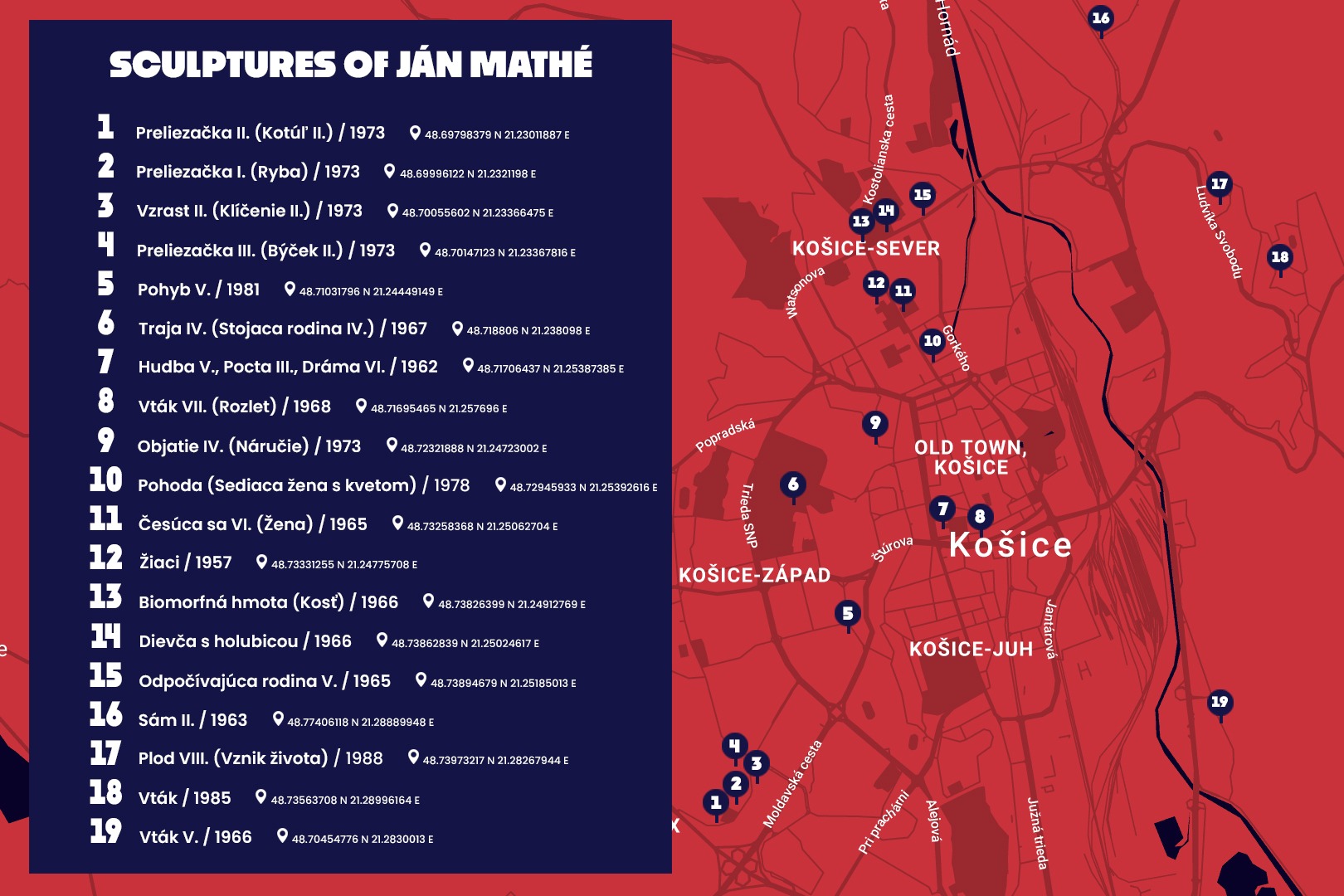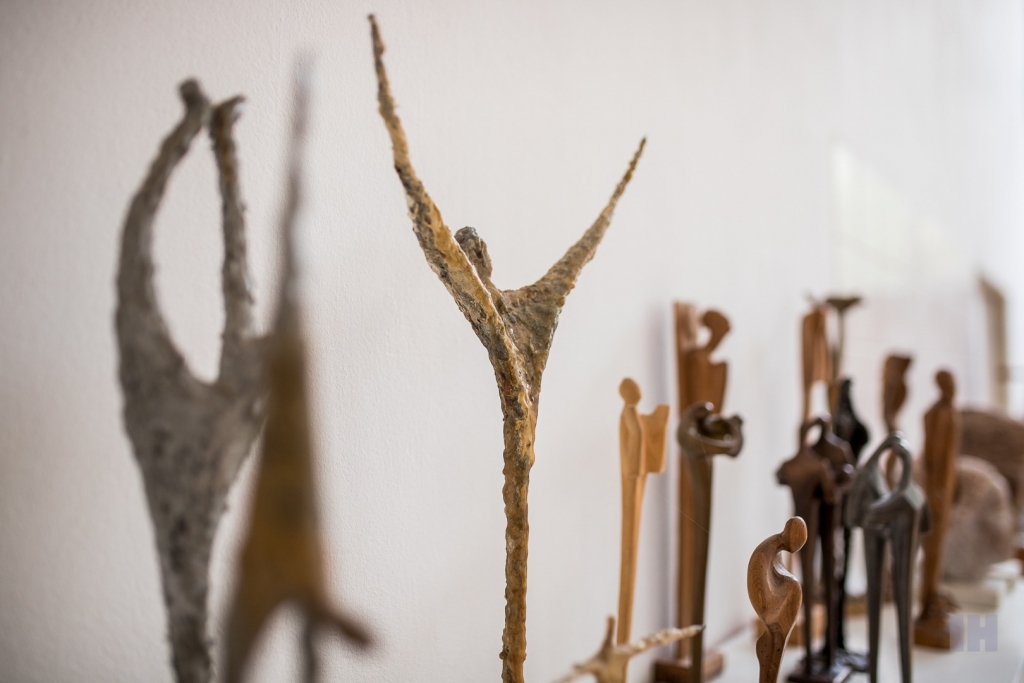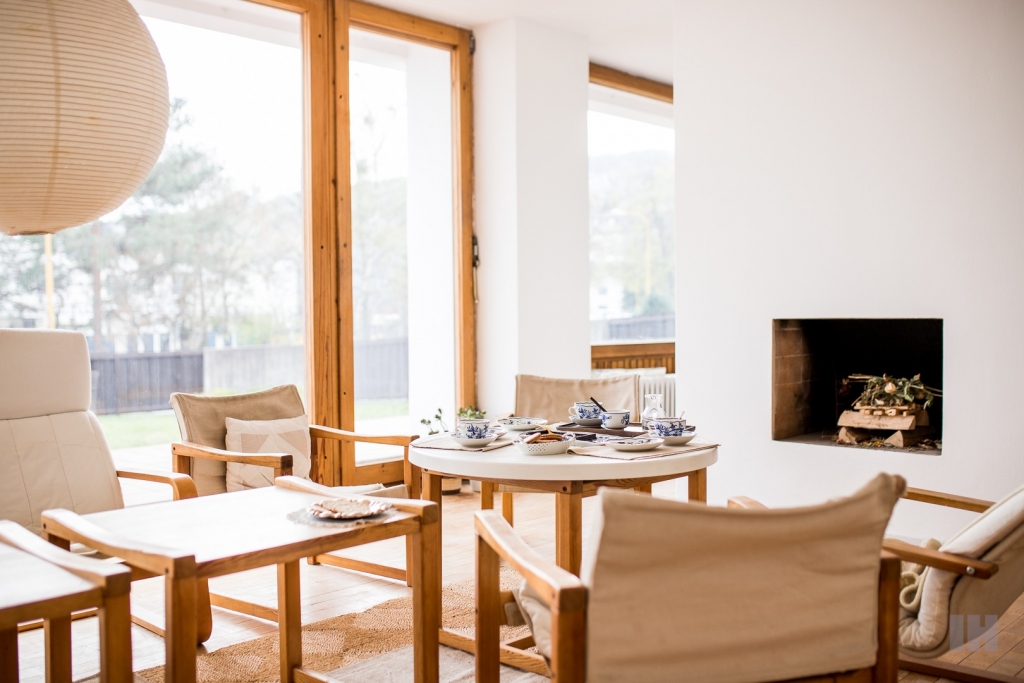World class artist – the life of a sculpture legend Ján Mathé from Košice
Ján Mathé (14.6.1922–5.6.2012) is considered the first academic sculptor in the history of the East Slovak region and one of the most prominent artists of the first post-war Slovak generation. His artworks are known amongst many residents of Košice neighbourhoods and till this day he is remembered with love and respect. Celebrating the state of being, self-pondering, expression of joy and references to beginnings of progeny – all of these motifs can be traced within his oeuvres. From realistic to abstract ones. Thanks to an incredible effort of his wife Eva Mathéová, the house where Jan Mathé lived and sculpted belongs now to the national cultural sights of Slovakia. Eva has shared astonishing memories of her husband and their life with us during one cold afternoon inside this radiant house.
This house could be described through the whiteness and 40-year old wooden parquets. White knitted pillows, tiles ordered from Karlovy Vary, silent gramophone and stairs which never creak. They are driven with wooden nails. The only Slovak Bauhaus stands calm and still at Horolezecká St, peacefully contrasting with the surrounding houses. It was right here where the couple lived most of their married life – it took Michal Baník 7 years to complete the building. In the future, the original furniture and large atelier are destined to become a public museum. For now, it celebrates a great success – Ján Mathé’s house has become a Slovak national cultural sight in January 2019.
“Jano was the most beautiful boy in the world. I would wish the same one for every girl, you too. He never complained, never blamed nor reproached. The most beautiful boy in the world,” says Mrs Eva Mathéová when asked about her husband. 86-year old wrinkles lining her face cannot beat the blue sparkles in her eyes.
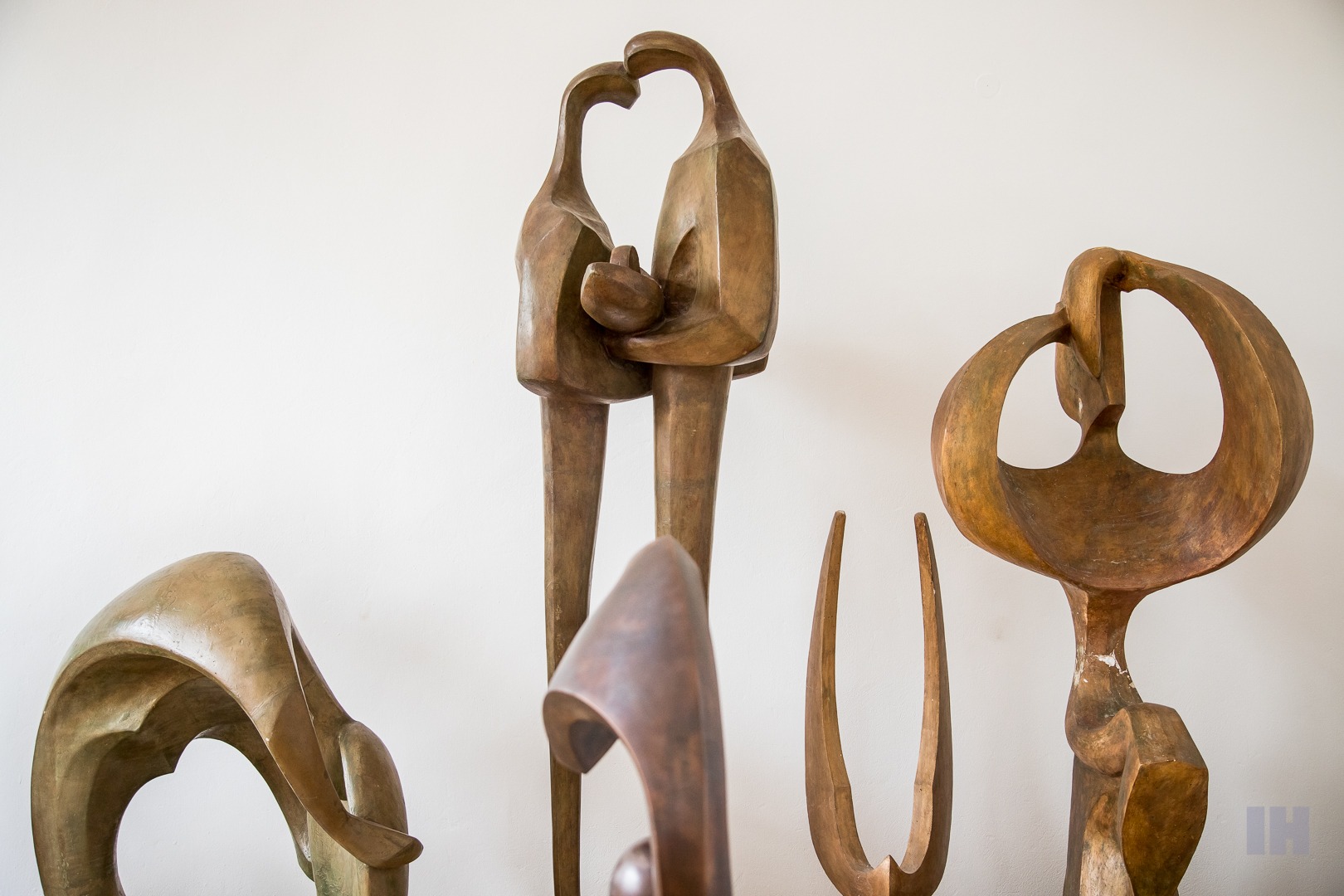
As a child, Ján Mathé lived with his family right inside the complex of State Hospital of Košice. His father often took him to the autopsy room so he would learn to draw and understand human anatomy. This unique skill was observed by Ján’s secondary school professor József Nádaskay during his studies at Premonštrátske gymnázium. The professor selected an exceptionally good group of students and gave them extra lessons for free. Yet his attention didn’t include only afternoon studying – caring Nádaskay introduced his students to cultural scene and emerging artists of that era. Out of this group, only Ján became a sculptor, others chose architecture. That came out pretty handy later in his life when former friends called on to him to create art pieces for new Košice neighbourhoods. We admire them till this very day.
Right after the final secondary school examination, Ján underwent military training and was sent to Ukraine. It was here where he experienced the most horrific scenes that haunted him his whole life – his classmate was killed standing next to each other. Jan only managed to take his identification card so the classmate’s parents would know he was not taken to Siberia. From pretending his own death amongst the assassinated friends, tramping through Austrian forests, meeting American soldiers up to the long-yearned end of the war. Ján buys a ticket to Prague for summer work wages and travels to attend the admission procedure at the university. His life story resembles that of a film scenario. The young man from Košice got lost in the new city and came late to school. A kind hall porter noticed him and made sure the professor Otakar Španiel offered him a test. Ján passed and stayed in Prague for five years studying and adopting virtues such as hope, strong faith, spiritual freedom. These remained his crucial pillars for the rest of his life – Ján strongly objected to the communist regime and maintained spiritual and religious motifs so wittily that they were able to be installed in many parts of the city. Even in such a strict period.
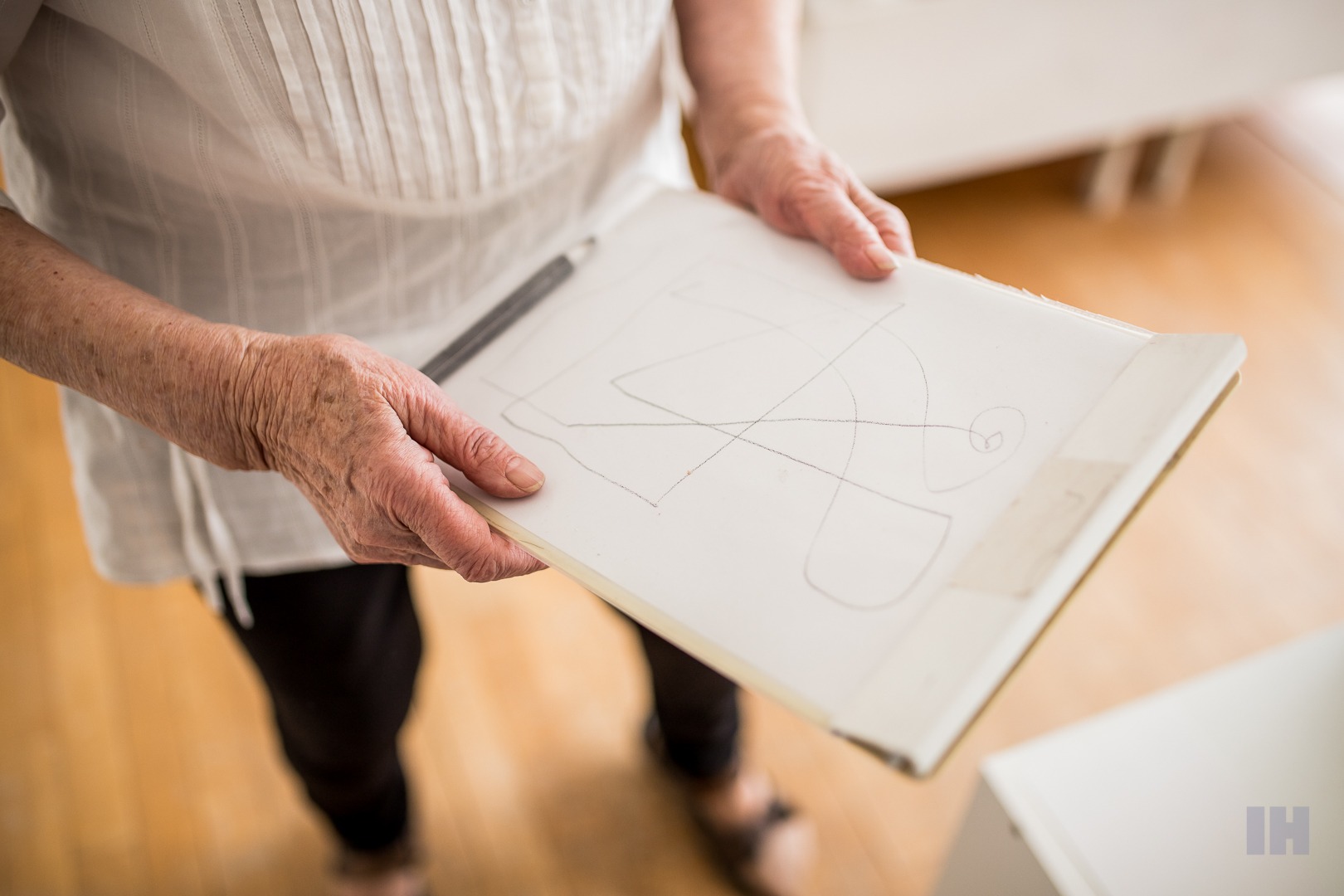
The couple met in Košice after the war and Ján’s studies in Prague. Eva, back then a young doctor, was described as a Hungarian ‘con woman’ on the front display of Main Street. Since the money could not have been exchanged, the young sold their clothes and bought new ones for the sum. Eva and her friend got caught for a few shirts and their names went out with a warning. During his whole life, Ján protected and cared for maltreated and abused ones – this funny story made him notice Eva and get to know her. He even saved her from being transferred to Rožňava as a punishment. Simply because he wished to date her. 53 years in marriage followed, out of which 7 the couple spent living in the basement at Pasteur St. This tiny space of one room and an atelier served for the inspiration of Češúca sa / Combing Herself (Poliklinika Sever) – as the couple did not even have their own bathroom, Eva washed her hair in the basin. Such an intimate moment was forever captured by the sensitive artist watching and admiring feminine movements of his adored wife.
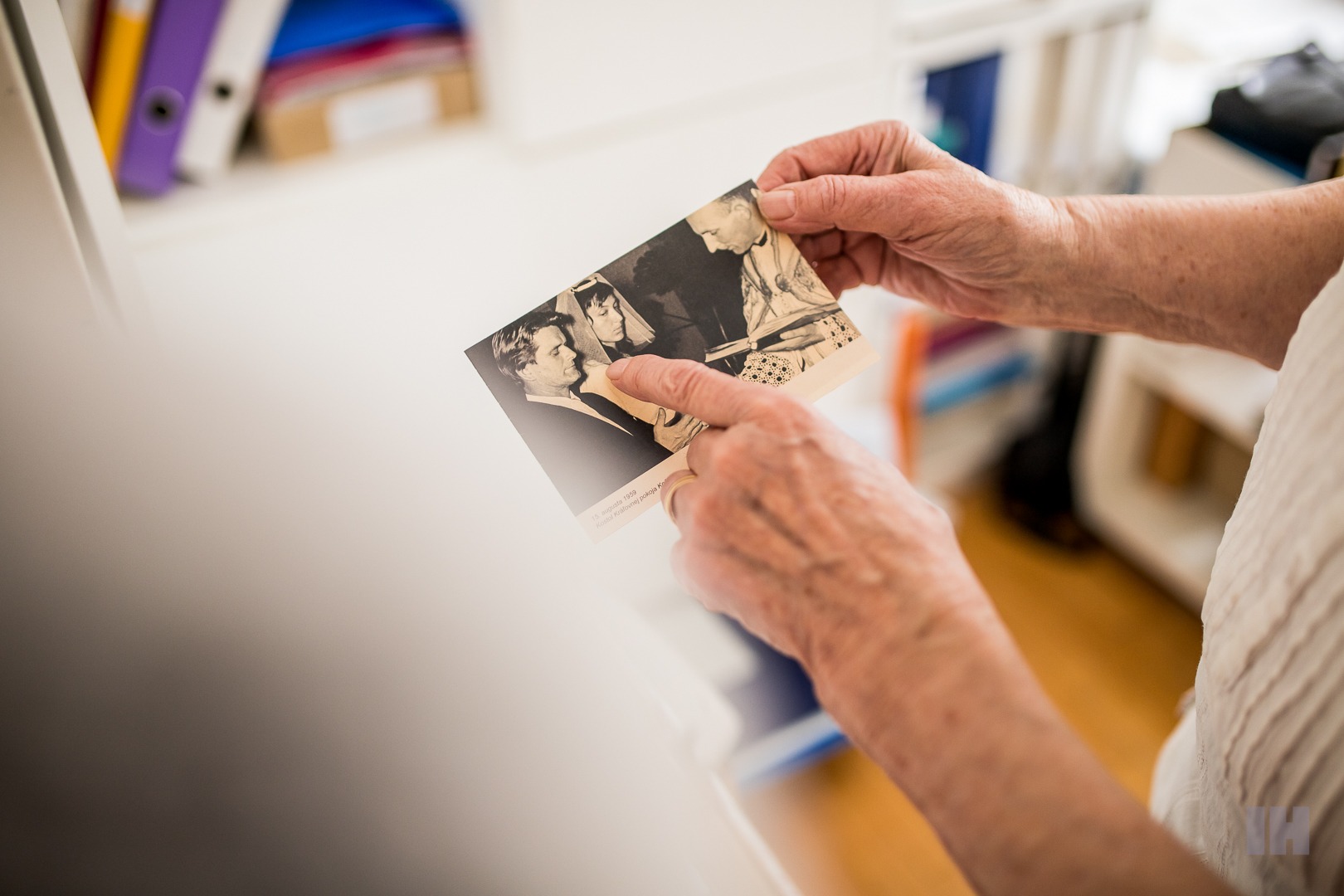
Ján and Eva lived through hard times as well when an awful car crash injured both of them in 1967. The artist stayed in a coma for several weeks and needed to learn everything from scratch. Eva remained by his side and helped to cure him during her 9-month unpaid leave. He often accredited his recovery to her. Later in the silence of his atelier and behind the back of the regime, Ján continued his sculptures and worked on his abstract art for years without a visit from his former contacts. Eva says that many thought his role as a sculptor was gone after the accident. Yet it was precisely throughout these years when his master oeuvre emerged – Plod život / The Feetus of Life. Ján never complained and never envied other artists who worked and created according to the doctrine and were allowed to exhibit their artworks. Eva was the one who found out Ján hadn’t had a solo exhibition in Slovakia during his lifetime. After that, the first one didn’t even take place in his hometown Košice – sculptures of Ján Mathé were seen by a public eye in the expo in 1984 in Slovak National Gallery, Bratislava and two years later in Košice. Hadn’t it been for Eva’s persistent effort and amazing skills, the sculptor’s own exhibition would have happened a long time later.
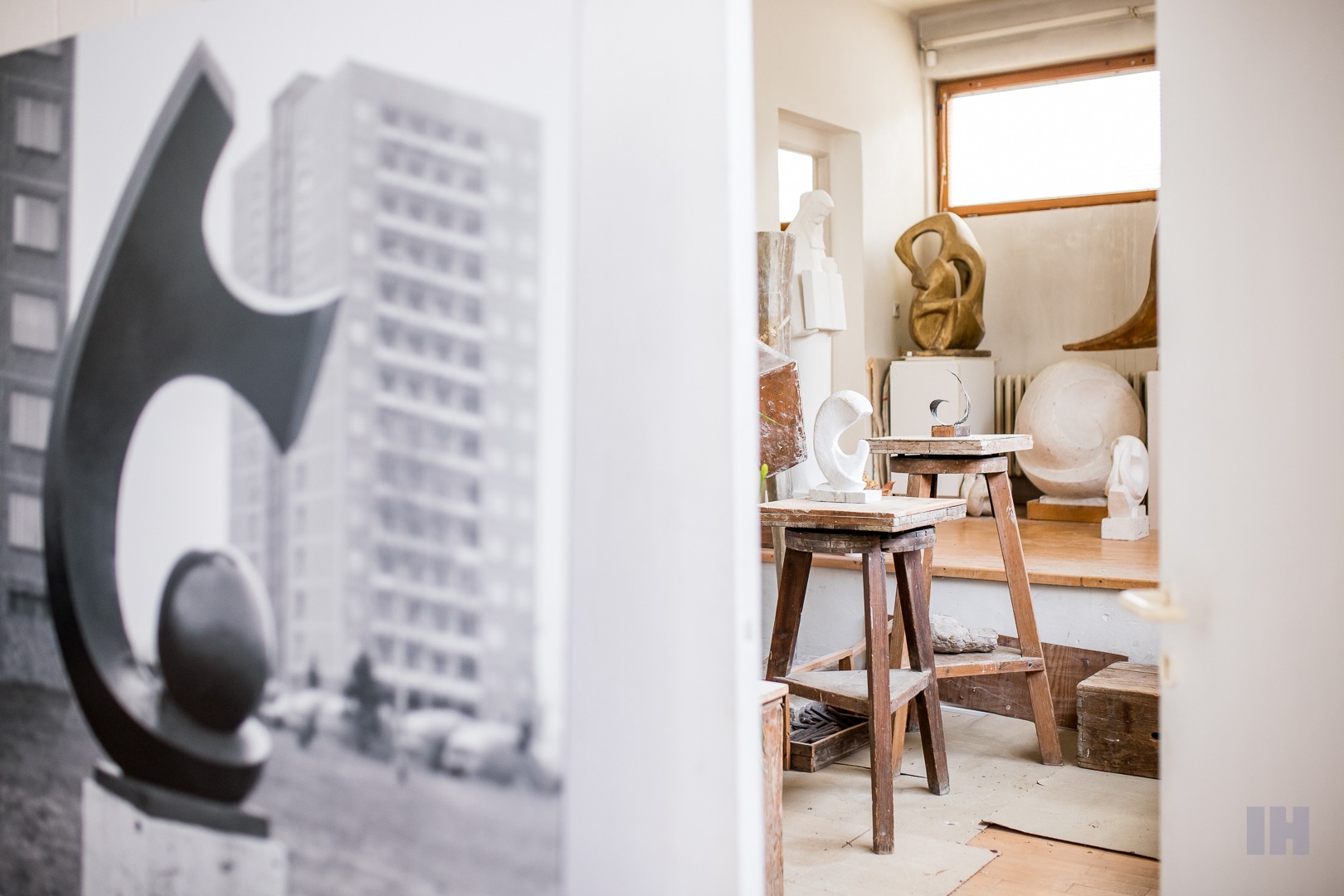
“I do not have a favourite sculpture. I love them all. Important is to remember that a sculpture does not describe. It states, utters, expresses – message, value, legacy.”
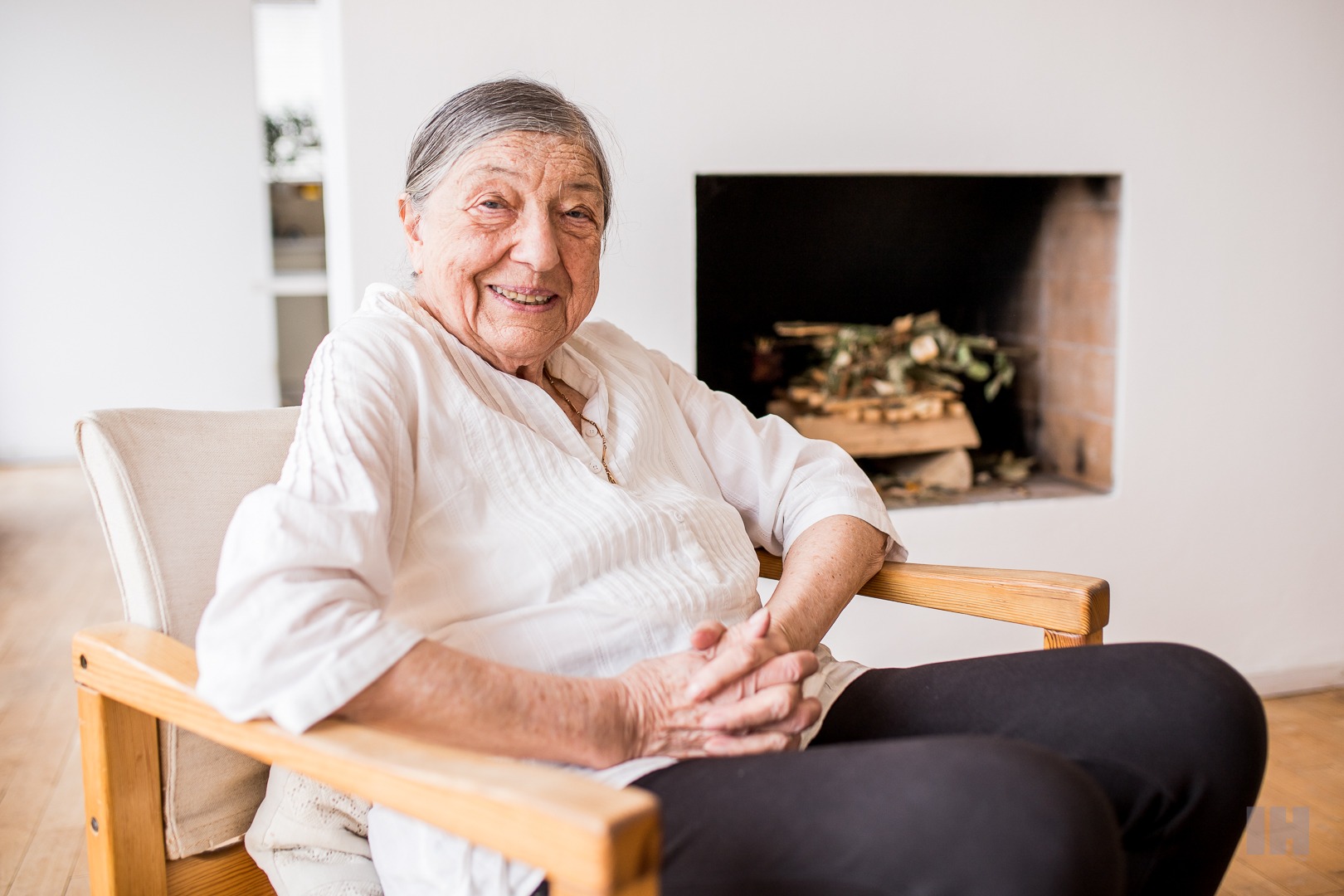
Love. That’s the most significant thing we take back home from the visit of Košice sculpture legend’s house. Ján Mathé – his spiritual strength, abstract work, tireless endurance in expression and simplifying the truth lives on in the stories and people who knew him. The memory of him relives when looking at his artworks scattered around the neighbourhoods of Terasa, Mier, Sever, Jazero and in the city centre. Celebration of life, family, “soaring high above the problems and sorrows of the world.” Dive into his rounded shapes next time you go around. Ján deserves it.
Find below a map with a customized tour of Ján Mathé’s sculptures in Košice.
